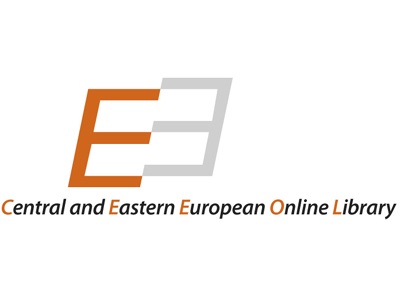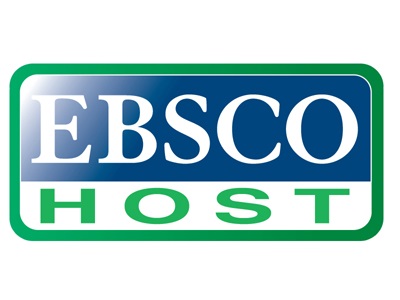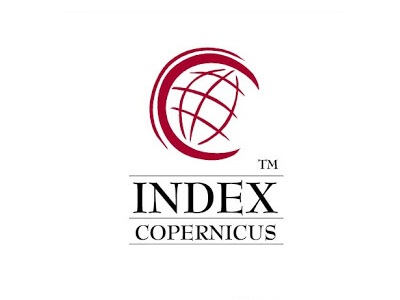
This paper focuses on the value creation and the value drivers. One of the objectives of this paper is to present the concept of maximizing shareholder value. The main goal is to categorize the most important value drivers, and their role of the firms’ value. This study proceeds as follows. The first section presents the value chain, the primary and the support activities. The second part describes the theoretical background of maximizing shareholder value. The third part illustrates the key value drivers. The fourth empirical section of the study analyses the database featuring data from 18 European countries, 10 sectors and 1553 firms in the period between 2004 and 2011. Finally, the fifth section includes concluding remarks. Based on the related literature reviewed and in the conducted empirical research it can be assessed that, the EBIT, reinvestment, invested capital, the return on invested capital, the net margin and the sales growth rate all have a positive effect on firm value, while the tax rate and the market value of return on asset (MROA) has a negative one.
- Type: Case Study
- Published on: 10th November, 2015
- Keywords: Value creation, Shareholder value, Value driver, Firm valuation
- Final revision and acceptance: 27th October, 2015

In this paper an attempt has been made to analyse the impact of Inflation on per capita income of emerging economies. In order to achieve the objective of the study the researchers have taken five major emerging countries of the world which are the members of BRICS. For the purpose of analysis, the data of thirteen years has been taken from 1999 to 2011. After employing the regression model, the results confirm that independent variable (inflation) does not statistically influence the dependent variable (Per Capita Income) in three countries which are India, Brazil and South Africa. However, in the other two countries (China and Russia) the findings affirm the independent variable (Inflation) does statistically influence the dependent variable (Per Capita Income).Therefore, it can be concluded that a change in the inflation rate can not necessarily bring a change in the per capita income of a country.
- Type: Case Study
- Published on: 10th November, 2015
- Keywords: BRICS, Inflation, Per Capita Income
- Final revision and acceptance: 27th October, 2015

The objective of this paper is to set a framework for examining the conditions under which the big data can create long-term profitability through developing dynamic operations and digital supply networks in supply chain. We investigate the extent to which big data analytics has the power to change the competitive landscape of industries that could offer operational, strategic and competitive advantages. This paper is based upon a qualitative study of the convergence of predictive analytics and big data in the field of supply chain management. Our findings indicate a need for manufacturers to introduce analytics tools, real-time data, and more flexible production techniques to improve their productivity in line with the new business model. By gathering and analysing vast volumes of data, analytics tools help companies to resource allocation and capital spends more effectively based on risk assessment. Finally, implications and directions for future research are discussed.
- Type: Case Study
- Published on: 10th November, 2015
- Keywords: Big data, Supply chain, Competitive advantage
- Final revision and acceptance: 27th October, 2015

The aim of this paper is to study the impact of Romanian Financial Supervisory Authority (FSA) decision number 23, which was taken on the 5th February of, 2014. This decision canceled the measure number 11 from August 12th, 2005, through which an investment fund cannot buy other investment fund’s stocks. By applying the new FSA decision, each investment fund, namely SIF 1 – Banat Crisana, SIF 2 – Moldova, SIF 3 – Transilvania, SIF 4 – Muntenia, and SIF 5 – Oltenia can buy stocks from each other. Our results show that the stocks return of the five investment funds, reacted significantly in the first day after the event, when a significant positive increase of 4.69% in the average return was recorded. Moreover, it seems that after 5 days the stock return of SIF3 has the tendency to return to pre-event values.
- Type: Case Study
- Published on: 10th November, 2015
- Keywords: Event study, Financial investment fund, Stock prices, Financial Supervisory Authority, Capital market
- Final revision and acceptance: 27th October, 2015

The fact that financial information alone is insufficient in assessing a company’s performance is more and more debated. . The present paper aims to analyze the relation between the changes in companies’ market value and selected financial and non-financial indicators for the airline industry. The main aim of this study is to analyze the value relevance of non-financial information in assessing a company’s performance by reference to the airline industry. The results reveal that non-financial indicators “load factor”, “available seat kilometers” and the financial measures “pretax return on assets”,“curent ratio”, ”debt-to-equity ratio” and ”sales growth” are valuable in explaining the stock price evolution.
- Type: Case Study
- Published on: 10th November, 2015
- Keywords: Non-financial indicators, Financial performance
- Final revision and acceptance: 27th October, 2015

Animal breeding for milk represents a basic occupation of the Romanian population, ensuring the best utilization of fodder obtained from natural pastures, steady incomes and local workforce stability. Since 2015 the restrictions imposed to producers from the European Union by the Milk Quota System ceased. The implementation of government strategies to support the national level of production and to efficiently capitalize raw milk and consumption could ensure a healthy nutrition to the population and substantial income. Romanian producers are affected by the quota’s elimination, which overlapped with a decrease in sales by increasing the milk supply on the domestic market due to Russia’s embargo.
- Type: Case Study
- Published on: 10th November, 2015
- Keywords: Milk, Production, Quota, Impact, Market
- Final revision and acceptance: 27th October, 2015

This article aims to highlight the role of knowledge intensive business services (KIBS) into supporting creative & innovative clusters. The paper focuses on the analysis of Romanian clusters, by identifying first their members and by underlying later the importance of these highly important actors for the regional development. It is structured into three parts. The first part presents a brief literature review by highlighting the most important characteristics of the creative & innovative clusters, and of the KIBS. In the second part the focus is on the analysis of creative & innovative clusters, observing their structure and projects, with the purpose to illustrate their impact for regional development. In the last part, it is highlighted the link between the KIBS and the creative & innovative clusters, emphasizing the essential strengths for the regional development strategy. In the end we present the main conclusions, underlying the novelty and the importance of the chosen topic for the Romanian economy.
- Type: Case Study
- Published on: 10th November, 2015
- Keywords: Knowledge intensive business services (KIBS), Cluster, Innovation, Regional development, Sustainability
- Final revision and acceptance: 27th October, 2015

In the context of an increasing organic trade worldwide, the organic standards and the certification of the organic practices are ever more important and relevant for both business and consumers. The certification by third parties of the organic operators is meant to ensure the application of an organic standard. However, the documented fraud cases are proof that the current system can undergo further improvement. The current paper gives an overview of the mechanisms of certification and inspection worldwide and discusses the issues raised by third party certification of the organic operators in the European context. Moreover, the paper reviews the major arguments for the effectiveness of the third party certification and also points to the improvement possibilities of the systems.
- Type: Review Article
- Published on: 10th November, 2015
- Keywords: Third party certification, Organic certification, European Union
- Final revision and acceptance: 27th October, 2015

Innovation has become a prerequisite for the ensuring of the success or even the survival of the business. Innovation cannot be acted singly, multidisciplinary teams are needed in several departments. It is necessary to achieve performance in the innovation management. Nowadays, to succeed and to offer value, the top management must be comfortable in a new world of rapidly changing technology. In some industries as the IT&C industry, the top management of a company must make difficult decisions about the application of new tools in a regulated environment where privacy is a critical concern. This paper aims to analyze how the top management of some companies in the IT&C industry in Romania performing work towards the awareness of the importance of innovation at the firm’s level and to create the strategic elements defining the innovation and how these activities are positioned in relation to the industry’s practices and the employees’ expectations.
- Type: Case Study
- Published on: 10th June 2015
- Keywords: Innovation, Innovation management, IT&C industry
- Final revision and acceptance: 27th May, 2015

The communication system is highly developed in the academic environment and not only involves the communication between the university and the outside world through exchanges of messages, but also the internal one with the employees and students. Online communication has gained increasingly more territory in the academic environment lately, especially thanks to the usage of e-mails and social networks. Therefore, this paper aims at presenting the main tools of the online communication in higher education as well as their importance of creating interaction among the participants in the education process. The conclusions emphasize that this type of communication significantly favors the teaching-learning process, creates real interaction between students and professors and contributes to the fast dissemination and access of information.
- Type: Case Study
- Published on: 10th June 2015
- Keywords: Online communication, Social Networks, Students, Higher Education
- Final revision and acceptance: 27th May, 2015

Scientific networking is the most accessible way a country can turn the brain drain into brain gain. Diaspora’s members offer valuable information, advice or financial support from the destination country, without being necessary to return. This article aims to investigate Romania’s potential of turning brain drain into brain networking, using evidence from the medical sector. The main factors influencing the collaboration with the country of origin are investigated. The conclusions suggest that Romania could benefit from the diaspora option, through an active implication at institutional level and the implementation of a strategy in this area.
- Type: Case Study
- Published on: 10th June 2015
- Keywords: Brain networking, Diaspora option, Brain gain, Medical sector, Romania
- Final revision and acceptance: 27th May, 2015

The paper presents a series of results obtained through a pilot survey applied to academics from a department of a state technical university and to leadership representatives of a private university in Romania. The survey is based upon an original conceptual framework aimed at analyzing the entrepreneurial attitudes and behavior within universities. The conceptual framework was elaborated by transferring and adapting to the university setting concepts that are relevant in the business environment. More precisely, the framework is drawing on Stevenson’s conceptualization of entrepreneurial management and on the approach of the entrepreneurial phenomenon through the social networks of the entrepreneur, developed by Bengt Johannisson. The analyses are aimed at obtaining quantifications of some features of university people entrepreneurial behavior: the degree of engagement in personal networking within the higher education system and with the business community representatives and the intention of initiating a venture.
- Type: Case Study
- Published on: 10th June 2015
- Keywords: Entrepreneurship studies, Entrepreneurial attitudes and behavior, The network approach, Egocentric and sociocentric networks
- Final revision and acceptance: 27th May, 2015

This article outlines learners’ difficulty in acquiring and practicing palliative medical skills necessary in medical procedures due to limited technologically state-of-the art language learning support to facilitate optimum access for medical students to the European medicine sector and offers as a potential solution the Palliative Care MOOC project (2014-1-RO01-KA203-002940). The project is co-financed by the European Union under the Erasmus+ program and coordinated by the Gr.T.Popa University of Medicine and Pharmacy Iasi, Romania. The article describes the project idea and main objectives, highlighting its focus and activities on developing innovative guidelines on standardized fundamental medical procedures, as well as clinical language and communication skills. The project thus helps not only medical lecturers and language teachers who teach medical students, but also the medical students themselves and the lay people involved in causalities.
- Type: Case Study
- Published on: 10th June 2015
- Keywords: Palliative, Procedures, Curricula, Languages, MOOC
- Final revision and acceptance: 27th May, 2015

Support vector machine represents an important tool for artificial neural networks techniques including classification and prediction. It offers a solution for a wide range of different issues in which cases the traditional optimization algorithms and methods cannot be applied directly due to different constraints, including memory restrictions, hidden relationships between variables, very high volume of computations that needs to be handled. One of these issues relates to medical diagnosis, a subset of the medical field. In this paper, the SVM learning algorithm is tested on a diabetes dataset and the results obtained for training with different kernel functions are presented and analyzed in order to determine a good approach from a telemedicine perspective.
- Type: Case Study
- Published on: 10th June 2015
- Keywords: Support vector machine, Medical diagnosis, Classification, Artificial neural network, Kernel function
- Final revision and acceptance: 27th May, 2015

Cities are one of the most important key in regional development. Creative and innovative cities are considered a competitive pole, by stimulating economic activities and inclusive growth. Those cities which understood the implications for sustainable development are prosperous and competitive at a global level, for example Silicon Valley which is well known as the city were Apple Industry started. The purpose of this paper is to analyze the best practice of creative and innovative cities at global level and extract the most important aspects, which could be applied on Romanian cities. In Romania, there are few cities which may be included in this category, as smart cities. In order to improve the existing literature, this paper aims to explain the benefits of stimulating the cities development and elaborate a list of recommendations for Romanian authorities.
- Type: Case Study
- Published on: 10th June 2015
- Keywords: Regional development, Creative cities, Urban sustainability, Innovation, Prosperity
- Final revision and acceptance: 27th May, 2015

The interdisciplinary study of information technology adoption has developed rapidly over the last 30 years. Various theoretical models have been developed and applied such as: the Technology Acceptance Model (TAM), Innovation Diffusion Theory (IDT), Theory of Planned Behavior (TPB), etc. The result of these many years of research is thousands of contributions to the field, which, however, remain highly fragmented. This paper develops a theoretical model of technology adoption by integrating major theories in the field: primarily IDT, TAM, and TPB. To do so while avoiding mess, an approach that goes back to basics in independent variable type’s development is proposed; emphasizing: 1) the logic of classification, and 2) psychological mechanisms behind variable types. Once developed these types are then populated with variables originating in empirical research. Conclusions are developed on which types are underpopulated and present potential for future research. I end with a set of methodological recommendations for future application of the model.
- Type: Review Article
- Published on: 10th June 2015
- Keywords: Technology adoption, Innovation diffusion, Technology management, Innovation management, Information technology
- Final revision and acceptance: 27th May, 2015

Mindfulness is increasingly being applied in companies as a means to increase, among others, employee wellbeing and energy, and in the same time to diminish stress. This paper argues that there seems to be scientific evidence showing that certain mindfulness techniques may diminish stress and increase energy, yet it seems that there is a period in the beginning of the mindfulness practice where the techniques have the opposite effects. These findings seem to be contradictory to past findings, which indicated that only two thirds of people practicing mindfulness techniques have positive effects from that practice. It may be that everybody can have positive effects from the practice of the mentioned techniques, just that some need to practice for a longer period before obtaining these positive effects. Further scientific studies seem to be needed in order to clarify the full spectrum of effects and consequences of practicing different mindfulness techniques, and just as important, if these effects are valid for everybody.
- Type: Case Study
- Published on: 10th June 2015
- Keywords: Mindfulness, Human Resource Management, Stress, Energy, ElectroPhotonic Imaging
- Final revision and acceptance: 27th May, 2015

Biomass is a renewable source, non-fossil, from which can be obtained fuels, which can be used in power generation systems. The main difference of fossil fuels is the availability biomass in nature and that it is in continue "reproduction". The use its enable the use of materials that could be destined destruction, as a source of energy "renewable", though result with many ecological values. In this paper we will study, applying a calculation model in view optimal sizing of the cogeneration plant based on biomass, biomass cost limit for the net present value is zero. It will consider that in cogeneration systems and in heating peak systems using biomass. After applying the mathematical model for limit value of biomass cost will determine the nominal optimal coefficient of cogeneration, for which discounted net revenue value is zero. Optimal sizing of CHP plants based on using biomass will be given by optimum coefficient of cogeneration determined following the application of the proposed mathematical model.
- Type: Case Study
- Published on: 10th June 2015
- Keywords: Biomass, Cogeneration, Net present value, Optimal coefficient of cogeneration
- Final revision and acceptance: 27th May, 2015











